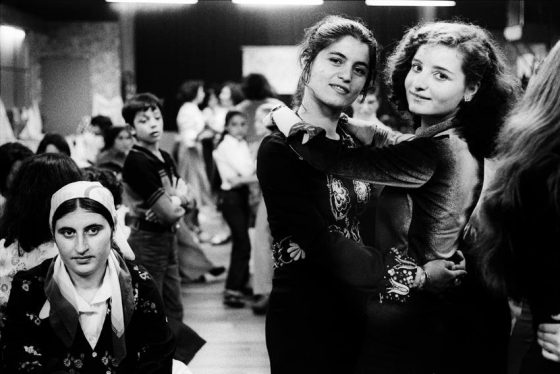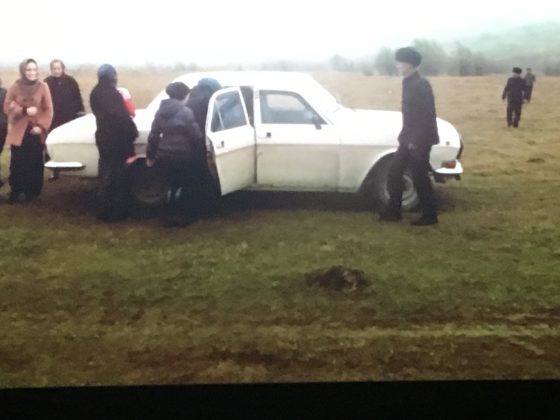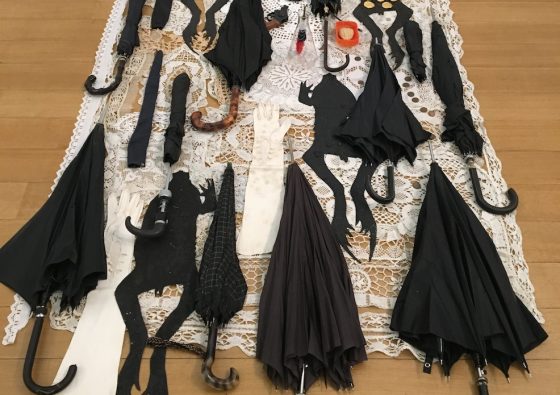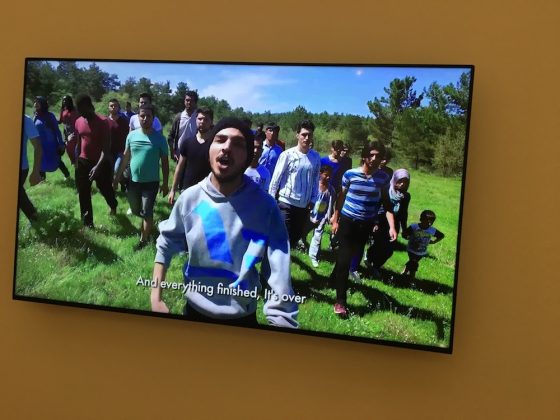Stedelijk show ‘I am a Native Foreigner’ uses film, photos, textiles and more

The Stedelijk Museum in Amsterdam continues its exploration of the theme of migration with a new exhibition, I am a Native Foreigner. Deborah Nicholls-Lee went along to check it out.
‘We’re all foreigners,’ says Beatrix Ruf, director of the Stedelijk Museum. ‘It’s an experience we all share, in a way. Even if you travel for a holiday, you experience displacement in relation to other contexts.’
The Stedelijk’s latest exhibition I am a Native Foreigner offers a 13-gallery exploration of the theme of migration and showcases photographs, textiles, paintings, installations, recordings and films from multi-national artists.
The oxymoronic title is taken from a quote by Mexican conceptual artist Ulises Carrión (1941-1989), whose work features in the exhibition. A migrant himself, he moved to the Netherlands in his thirties and experienced first hand this duality.
Not at home
‘As an artist, you do not always feel at home,’ explains Leontine Coelewij, the exhibition’s chief curator. This sense of distance and loneliness is communicated in many of the selected works. Kors van Bennekom’s photographs, for example, show Surinamese children arriving in the Netherlands, dwarfed by the immense, stark architecture of Schiphol.
There is also Aslan Gaisumov’s film of a white Volga car, which stands solitary in a vast field, until crammed full with migrants in heavy winter clothes, who appear like ghosts from the mist behind it.

A broad theme
I am a Native Foreigner is one of a series of exhibitions at the museum that, from 2017 to 2018, are being devoted to the theme of migration.
Across the corridor, Carlos Motta: The Crossing, which runs until January 21, tells the story – largely in video form – of LGBTQI refugees in the Netherlands. The exhibits – real people with real stories – ‘talk very openly and directly with you,’ says curator Martijn van Nieuwenhuyzen.
Ruf encourages visitors to view the neighbouring exhibitions in tandem, ‘to see how they dialogue,’ but she is keen to point out that I am a Native Foreigner is a wider treatment of the theme than has been seen before. ‘This exhibition,’ she says bluntly, ‘is not about refugees.’ Instead, it explores ‘what migration in a broader sense means for artists’.
For Coelewij, this open interpretation of the theme was crucial. ‘I really wanted to provide a place in the exhibition for a variety of approaches,’ she explains. ‘You see work from artists who are migrants themselves … also work from photographers who show the realities of migration … and you’ll also see work from more conceptual artists.’
A plural perspective
Visitors used to a more focused interrogation of a theme may find this sprawling, all-encompassing exhibition hard to take in. Works span many different eras, introduce numerous perspectives, and make use of a huge range of media. But its ambitious eclecticism – born, in part, of the museum’s desire to explore its own collection – is also a comment on the plurality of the migrant experience and avoids the trap of a singularly colonial, Eurocentric outlook.
In one gallery, for example, hang Nola Hatterman’s oil portraits of Surinamese immigrant workers in the Netherlands. In another, the tables are turned, as Lewis Wickes Hine’s photographs record the Dutch at their most vulnerable, arriving at Ellis Island, New York, with huge identification numbers pinned clumsily to their jackets, uncertain of their future.
Material displacement

As well as displaced people, the exhibition includes materials and techniques which have crossed continents. The brightly-coloured textiles of the Amsterdam artist Michiel Schuurman, for example, make use of the primarily Asian tradition of batik, but are sold in bulk to the African market.
Material displacement and the plundering of riches is explored by Nigerian-born Otobong Nkanga in In Pursuit of Bling, a huge multi-media display to the rear of the exhibition. Non-native minerals, dug out of their homeland and used to decorate overseas monuments, is the subject of a poem set to film:
‘You have travelled a long way through land and sea to crown your captors’ roofs,’ the wistful voice reads. ‘I am raw. I just came visiting. I am a tourist in this land. But I knew you’d be here … I am raw, a distant cousin, but we are from the same core.’
Abstract art
You can also find more abstract pieces, such as Rossella Biscotti’s giant Mondrianesque carpet, inspired by the patterns created by American punch cards used in the 1980 census.
Particularly bold is the inclusion of the vivid, erotic art of Miguel-Ángel Cárdenas, a Columbian whose migration to the Netherlands in the sixties permitted a freedom that, as a homosexual, had been impossible in his home country. His work offers a graphic – sometimes shocking – exploration of sexual organs and sexual interaction, with face-reddening titles such as Hard, Hot Diagonal Wound.
Future exploration of the theme

The Stedelijk sees I am a Native Foreigner as part of a longer process of discovery as it unearths the treasures of the museum’s own archives. ‘The exhibition,’ explains Ruf, ‘is deeply rooted in the project which we started in the collection … We want to learn continuously from the collection … to see which narratives have been started and which have maybe been overlooked.’
This project is set for the long term, ‘but,’ warns Ruf, ‘don’t always expect the same approach.’
I am a Native Foreigner opened 23 September 2017 and runs until 3 June 2018.
Thank you for donating to DutchNews.nl.
We could not provide the Dutch News service, and keep it free of charge, without the generous support of our readers. Your donations allow us to report on issues you tell us matter, and provide you with a summary of the most important Dutch news each day.
Make a donation